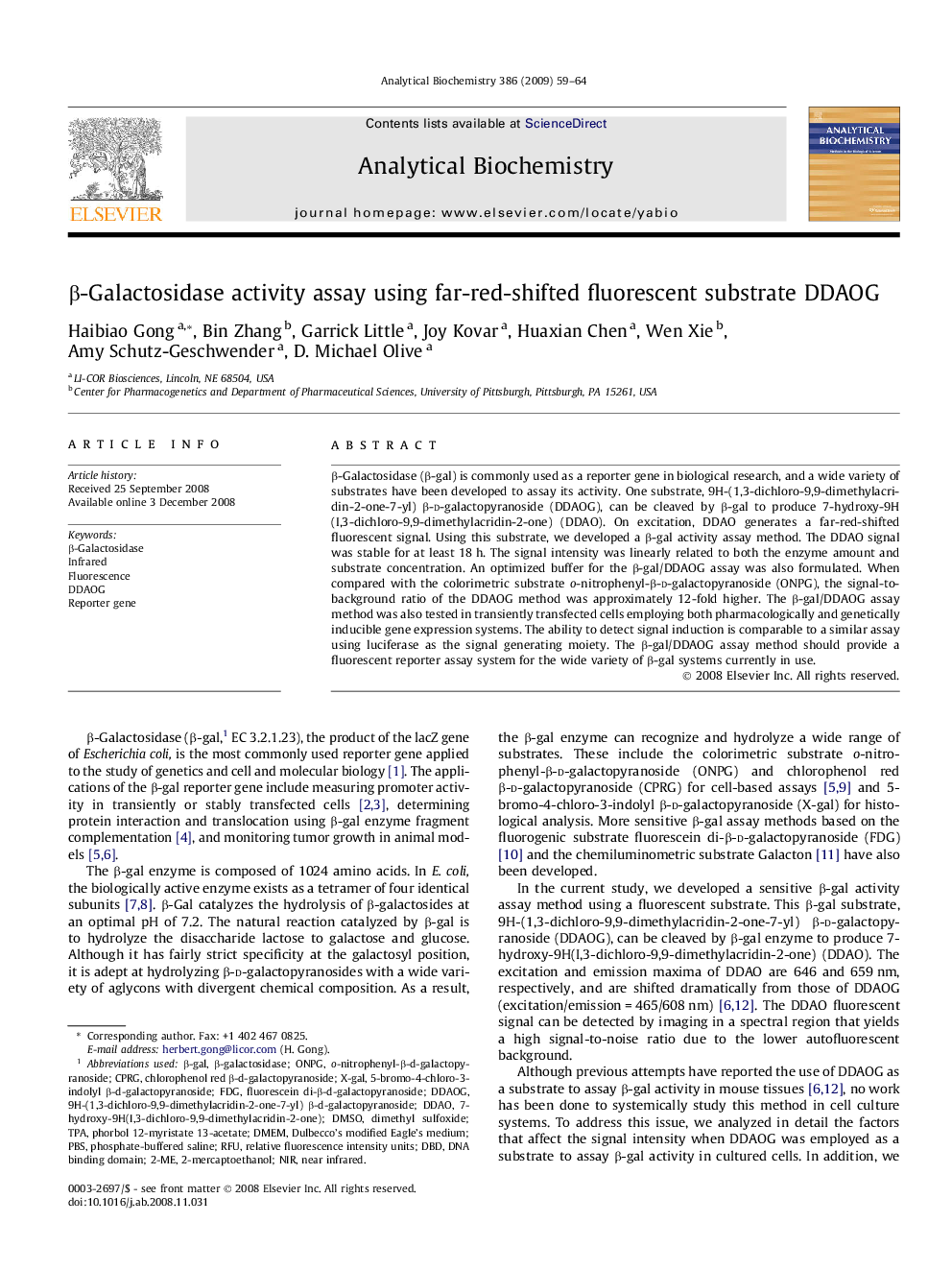| Article ID | Journal | Published Year | Pages | File Type |
|---|---|---|---|---|
| 1177098 | Analytical Biochemistry | 2009 | 6 Pages |
β-Galactosidase (β-gal) is commonly used as a reporter gene in biological research, and a wide variety of substrates have been developed to assay its activity. One substrate, 9H-(1,3-dichloro-9,9-dimethylacridin-2-one-7-yl) β-d-galactopyranoside (DDAOG), can be cleaved by β-gal to produce 7-hydroxy-9H(I,3-dichloro-9,9-dimethylacridin-2-one) (DDAO). On excitation, DDAO generates a far-red-shifted fluorescent signal. Using this substrate, we developed a β-gal activity assay method. The DDAO signal was stable for at least 18 h. The signal intensity was linearly related to both the enzyme amount and substrate concentration. An optimized buffer for the β-gal/DDAOG assay was also formulated. When compared with the colorimetric substrate o-nitrophenyl-β-d-galactopyranoside (ONPG), the signal-to-background ratio of the DDAOG method was approximately 12-fold higher. The β-gal/DDAOG assay method was also tested in transiently transfected cells employing both pharmacologically and genetically inducible gene expression systems. The ability to detect signal induction is comparable to a similar assay using luciferase as the signal generating moiety. The β-gal/DDAOG assay method should provide a fluorescent reporter assay system for the wide variety of β-gal systems currently in use.
